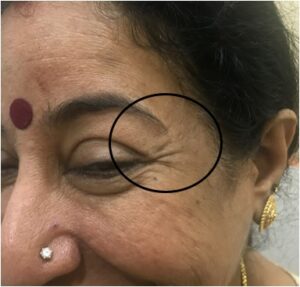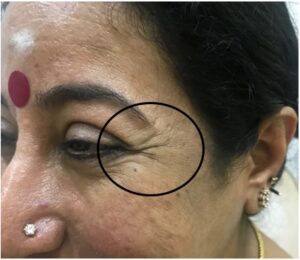1. Eisele KH, Fink K, Vey M, Taylor HV. Studies on the dissociation of botulinum neurotoxin type A complexes. Toxicon. 2011; 57: 555-565. doi: 10.1016/j.toxicon.2010.12.019
2. Frevert J, Dressler D. Complexing proteins in botulinum toxin type A drugs: A help or a hindrance? Biologics. 2010; 4: 325-332. doi: 10.2147/BTT.S14902
3. Kukreja RV, Singh BR. Comparative role of neurotoxin-associated proteins in the structural stability and endopeptidase activity of botulinum neurotoxin complex type A and E. Biochemistry. 2007; 46: 1416-14324. doi: 10.1021/bi701564f
4. Dong M, Yeh F, Tepp WH, et al. SV2 Is the protein receptor for botulinum neurotoxin A. Science. 2006; 312: 592-596. doi: 10.1126/science.1123654
5. Pirrazini M, Rossetto O, Eleopra R, Montecucco C. Botulinum neurotoxins: Biology, pharmacology, and toxicology. Pharmacol. Rev. 2017; 69: 200-235. doi: 10.1124/pr.116.012658
6. Dressler D, Bigalke H. Immunological aspects of botulinum toxin therapy. Expert Rev Neurother. 2017; 17: 487-494. doi: 10.1080/14737175.2017.1262258
7. Ojo OO, Fernandez HH. Is it time for flexibility in Botulinum inter-injection intervals? Toxicon. 2015; 107: 72-76. doi: 10.1016/j.toxicon.2015.09.037
8. Sethi KD, Rodriguez R, Olayinka B. Satisfaction with Botulinum toxin treatment: A cross sectional survey of patients with cervical dystonia. J. Med. Econ. 2012; 15: 419-423. doi: 10.3111/13696998.2011.653726
9. Evidente VGH, Fernandez HH, LeDoux MS, et al. A randomised, double blind study of repeated Incobotulinumtoxin A(Xeonim(®))in cervical dystonia. J Neural Transm (Vienna). 2013; 120: 1699-1707. doi: 10.1007/s00702-013-1048-3
10. Truong DD, Gollomp SM, Jankovic J, LeWitt PA, Marx M, Hanschmann A, Fernandez HH, Xeomin US Blepharospasm study group. Sustained efficacy and safety of repeated Incobotulinumtoxin A (Xeonim(®)) injections in blepharospasm. J Neural Transm (Vienna). 2013; 120: 1345-1353. doi: 10.1007/s00702-013-0998-9
11. Kukreja R, Chang TW, Cai S, et al. Immunological characterization of the subunits of type A botulinum neurotoxin and different components of its associated proteins. Toxicon. 2009; 53: 616-624. doi: 10.1016/j.toxicon.2009.01.017
12. Torji Y, Goto Y Nakahira S, Kozaki S, Ginnaga A. Comparison of the immunogenicity of botulinum type A and the efficacy of A1 and A2 neurotoxins in animals with A1 toxin antibodies. Toxicon. 2014; 77: 114-120. doi: 10.1016/jtoxin.2013.11.006
13. Dressler D, Wohlfabrt K, Rogge E, Wiest L, Bigalke H. Antibody induced failure of botulinum toxin a therapy in cosmetic indications. Dematol Surg. 2010; 36 (supply 4): 2182-2187. doi: 10.1111/j,1524-4725.2010.01710.x
14. Dressler D, Pan L, Adib Saberi F. Antibody induced failure of toxin therapy: Re-start with low antigenicity drugs offers a new treatment opportunity. J Neural Transm (Vienna). 2018; 125: 1481- 1486. doi: 10.1007/s00702-018-1911-3
15. Stengel G, Bee EK. Antibody induced secondary treatment failure in a patient treated with botulinum toxin type A for glabellar frown lines. Clin Interv Aging. 2011; 6: 281-284. doi: 10.2147/CIA. S18997
16. Shulte-Baukloh H, Bigalke H, Miller K, et al. Botulinum toxin type a in urology: Antibodies as a cause of therapy failure. Int J Urol. 2008; 15: 407-415: discussion 415. doi: 10.1111/j.1442-2042.2008.02016x
17. Yablon SA, Brashear A, Gordon MF, Elovic EP. Formation of neutralizing antibodies in patients receiving botulinum toxin type A for treatment of post stroke spasticity: A pooled data analysis of three clinical trials. Clin Ther. 2007; 29: 683-690. doi: 10.1016/jclinthera.2007.04.015
18. Yablon S. The development of toxin neutralizing antibodies with botulinum toxin type A (botulinum toxin type A) treatment. Neurotox Res. 2006; 9: 238.
19. Brin MF, Comella CL, Jankovik J, Lai F, Naumann M, CD-017 BoNTA Study Group. Long term treatment with botulinum toxin type A in cervical dystonia has low immunogenicity by mouse protection assay. Mov Disord. 2008; 23: 1353-1360. doi: 10.1002/mds.22157
20. Muller K, Mix E, Adib Saberi FA, Dressler D, Benecke R. Prevalence of neutralizing antibodies in patients treated with botulinum toxin type A for spasticity. J Neural Transm (Vienna). 2009; 116: 579-585. doi: 10.1007/s00702-009.0223-z
21. Dressler D. Pharmacological aspects of therapeutic botulinum toxin preparations. Nervenarzt. 2006; 77: 912-921. doi: 10.1007/s00115-006-2090-2
22. Jankovic J, Vuong KD, Ahsan J. Comparison of efficacy and immunogenicity of original versus current botulinum toxin in cervical dystonia. Neurology. 2003; 60: 1186-1188. doi: 10.1212/01.wnl.0000055087.96356bb
23. Torres S, Hamilton M, Sanches E, Starovatova P, Gubanova E, Reshetnikova T. Neutralizing antibodies to botulinum toxin type A in aesthetic medicine: Five case reports. Clin Cosmet Investig Dermatol. 2014; 7: 11-17. doi: 10.2147/CCID.S51938
24. Dashtipour K, Pedouim F. Botulinum toxin: Preparations for clinical use, immunogenicity, side effects, and safety profile. Semin Neurol. 2016; 36: 29-33. doi: 10.1055/s-0035-1571213
25. Samizadeh S, De Boulle K. Botulinum neurotoxin formulations: Overcoming the confusion. Clin Cosmet Investig Dermatol. 2018; 11: 273-287. doi: 10.2147/CCID.S156851
26. Goschel H, Wohlfarth K, Frevert J, Dengler R, Bigalke H. Botulinum A toxin therapy: Neutralizing and non neutralizing antibodiies- therapeutic consequences. Exp Neurol. 1997; 147: 96-102. doi: 10.1006/exnr.1997.6580
27. Nauman M, Boo LM, Ackerman AH, Gallagher CJ. Immunogenicity of botulinum toxins. J Neural Transm (Vienna). 2013; 120: 275-290. doi: 10.1007/s00702-012-0893-9
28. Hsiung GYR, Das SK, Ranawaya R, Lafontain AL, Suchowersky O. Long term efficacy of botulinum toxin A in treatment of various movement disorders over a 10 year period. Mov Disord. 2002; 17: 1288-1293. doi: 10.1002/mds.10252
29. Ramirez-Castaneda J, Jankovic J. Long term efficacy and safety of botulinum toxin injections in Dystonia. Toxins (Basel). 2013; 5: 249-266. doi: 10.3390/toxins5020249
30. Jinnah HA, Goodman E, Rosen AR, Evatt M, Freeman A, Factor S. Botulinum toxin treatment failures in cervical dystonia: Causes management and outcomes. J Neurol. 2016; 263: 1188-1194. doi: 10.1007/s00415-016-8136-x
31. Fabbri M, Leodori G, Fernandes RM, et al. Neutralizing antibody and botulinum toxin therapy: Systematic review and metaanalysis. Neurotox Res. 2016; 29: 105-117. doi: 10.1007/s12640-015- 9565-5
32. Oshima M, Deitiker P, Jankovic J, Attasi MZ. The regions on the light chain of botulinum toxin type A recognised by T cells from toxin related cervical dystonia patients. The complete human T cell recognition map of the toxin molecule. Immunol Investig. 2018; 47: 18-39. doi: 10.1080/08820139.2017.1368544
33. Dolimbek BZ, Steward LE, Aoki KR, Attasi MZ. Location of the synaptosome binding regions on botulinum toxin B. Biochemistry. 2012; 51: 316-328. doi: 10.1021/bi201322c
34. Sankhla C, jankovic J, Duane D. Variability of the immunologic and clinical response in dystonic patients immunoresistant to botulinum toxin injections. Mov Disord. 1998; 13: 150-154. doi: 10.1002/mds.870130128
35. Dressler D, Pan L, Adib Saberi F. Antibody induced failure of botulinum toxin therapy: Re-start with low antigenicity drugs offers a new treatment opportunity. J Neural Transm (Vienna). 2018; 125: 1481-1486. doi: 10.1007/s00702-018-1911-3
36. Dressler D, Munchau A, Bhatia KP, Quinn NP, Bigalke H. Antibody induced botulinum toxin therapy failure: Can it be overcome by increased botulinum toxin doses? Eur Neurol. 2002; 47: 118-121. doi: 10.1159/000047963
37. Joshi SG, Elias M, Singh A, et al. Modulation of botulinum toxin induced changes in neuromuscular function with antibodies directed against recombinant polypeptides or fragments. Neuroscience. 2011; 179: 208-222. doi: 10.1016/j.neuroscience.2011.01.033
38. Aoki KR, Guyer B. Botulinum toxin type A and other botulinum toxin serotypes: A comparative review of biochemical and pharmacological actions. Eur J Neurol. 2001; 8 (Suppl.5): 21-29. doi: 10.1046/j.1468-1331.2001.00035.x
39. Dressler D, Hallet M. Immunological aspects of botox, dysport and myobloc/neurobloc. Eur J Neurol. 2006; 13 (Suppl. 1): 11-15. doi: 10.1111/j.1468-1331.2006.01439.x
40. Hanna PA, Jankovic J, Vincent A. Comparison of mouse bioassay and immunoprecipitation assay for botulinum toxin antibodies. J Neurol Neurosurg Psychiatry. 1999; 66: 612-616. doi: 10.1136/jnnp.66.5.612
41. Hanna PA, Jankovic J. Mouse bioassay versus western blot assay for botulinum toxin antibodies: Correlation with clinical response. Neurology. 1998; 50(6): 1624-1629. doi: 10.1212/wnl.50.6.1624
42. Dressler D. Clinical presentation and management of antibodyinduced failure of botulinum toxin therapy. Mov Disord. 2004; 19 suppl 8: S92-S100. doi: 10.1002/mds.20022
43. Borodic G. Immunologic resistance after repeated botulinum toxin type A injections for facial rhytides. Ophthal Plast Reconsr. 2006; 22: 239-240. doi: 10.1097/01.iop.0000217703.80859.a3
44. Lee SK. Antibody-induced failure of botulinum toxin type A therapy in a patient with massetric hypertrophy. Dermatol Surg. 2007; 33 (1 Spec No): S105-S110. doi: 10.1111/j.1524-4725.2006.32340.x
45. Dressler D, Wohlfahrt K, Mever-Rogg E, Bigalke H. Antibodyinduced failure of botulinum toxin type A therapy in cosmetic indications. Dermatol Surg. 2010; 36 Suppl 4: 2182-2187. doi: 10.1111/j.1524-4725.2010.01710.x
46. Stengel G, Bee EK. Antibody-induced secondary treatment failure in a patient treated with botulinum toxin type A for glabellar frown lines. Clin Interv Aging. 2011; 6: 281-284. doi: 10.2147/CIA.S18997
47. Mohammadi B, Buhr N, Bigalke H, Krampfl K, Delger R, Kollewe K. A long term follow up of botulinum toxin A in cervical dystonia. Neurol Res. 2009; 31: 463-466. doi: 10.1179/174313209X405137
48. Nauman M, Carruthers A, Carruthers J, et al. Meta analysis of neutralizing antibody conversion with onabotulinum toxin A (BOTOX®) across multiple indications. Mov Disord. 2010; 25: 2211- 2218. doi: 10.1002/mds.23254
49. Frevert J. Pharmacological, biological and clinical properties of botulinum neurotoxin type A products. Drugs R D. 2015; 15(1): 1-9. doi: 10.1007/s40268-014-0077-1







